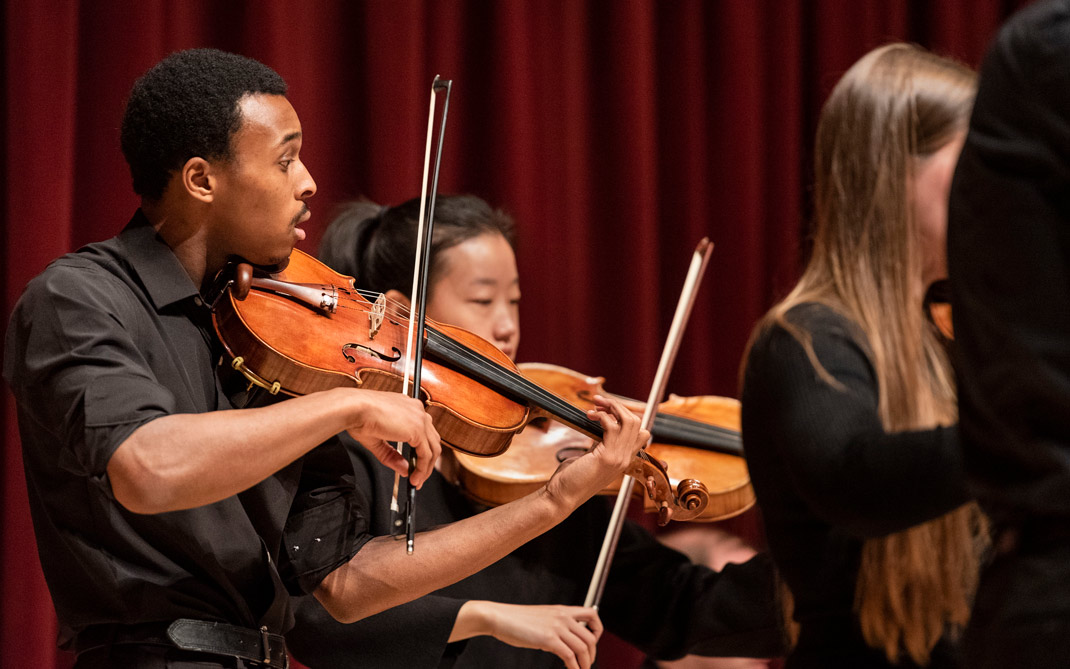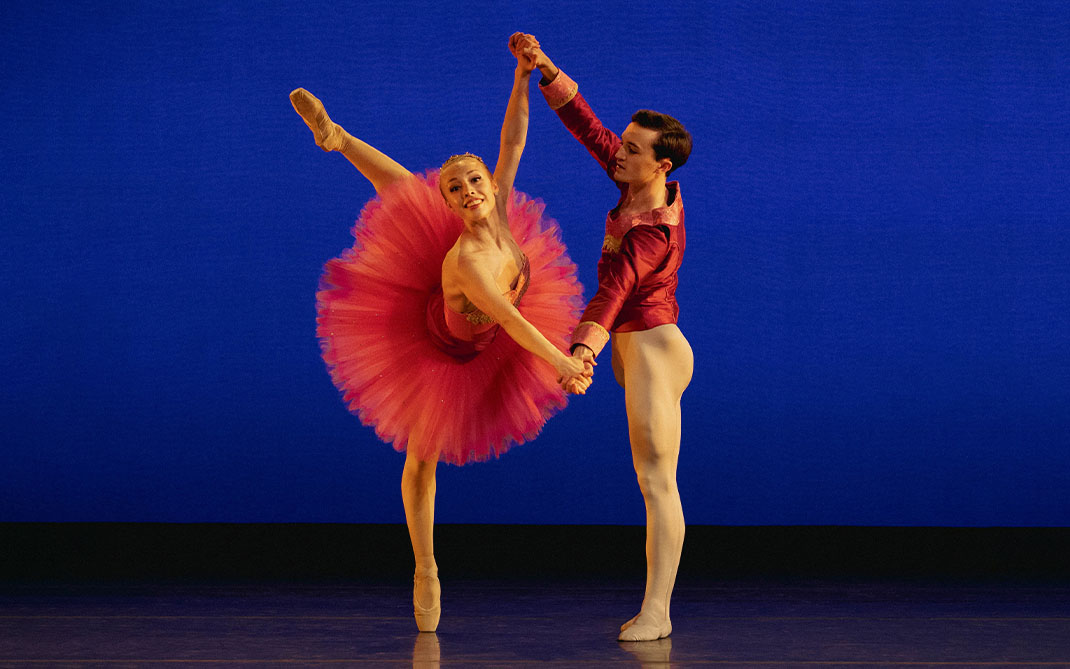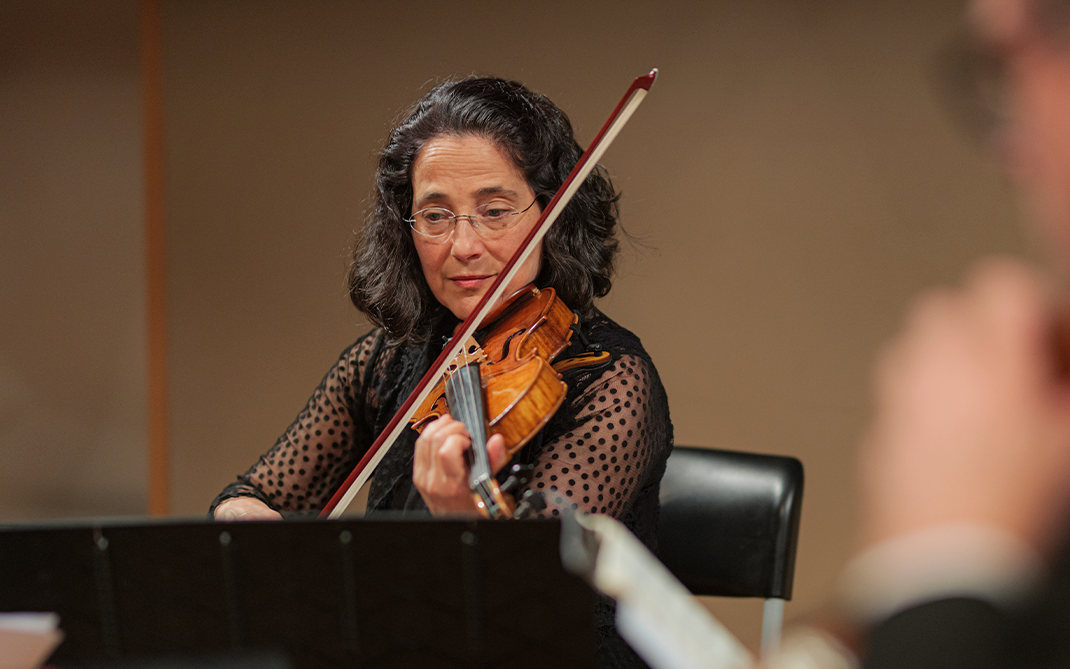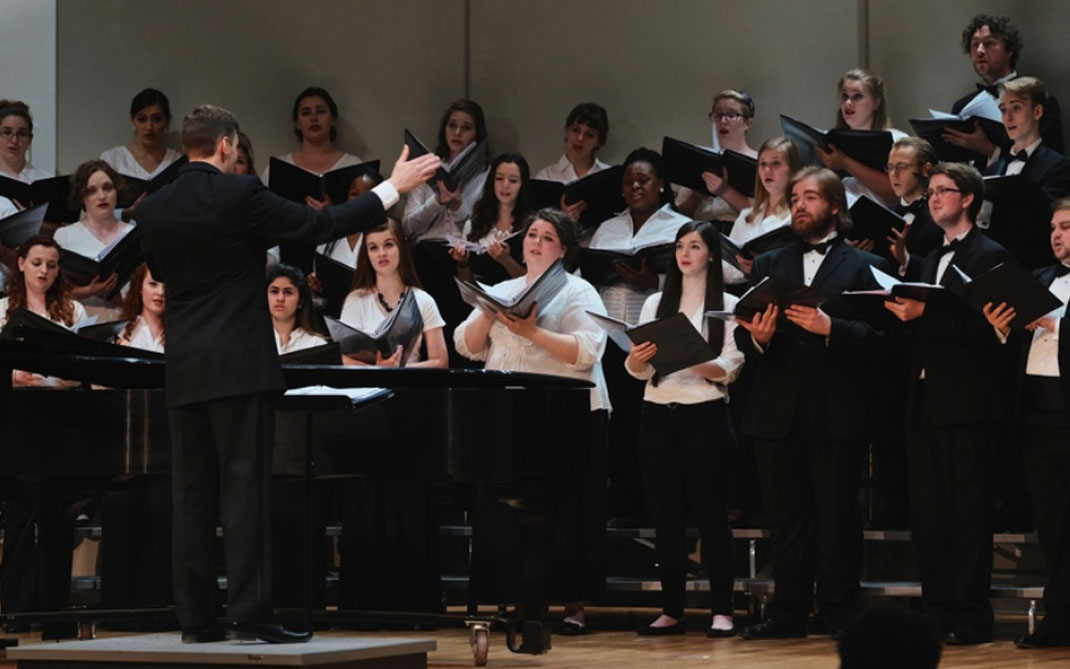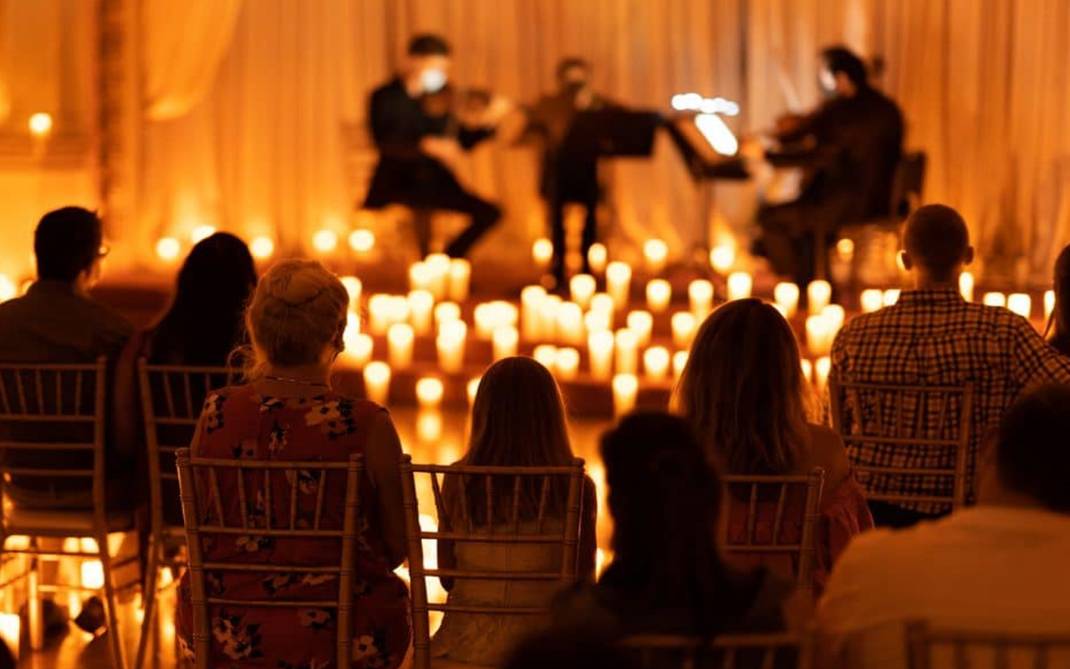School of Dance Annual Report
Institutional Effectiveness
Dance
The following Student Learning Objectives and assessment information is for Bachelor of Fine Arts undergraduate programs in the School of Dance. Concentrations are offered in Classical Ballet and Contemporary Dance.
Program Mission
The purpose of the School of Dance is to identify and prepare young, talented dancers for professional performing careers. Our rigorous and nurturing conservatory approach develops technically sound, artistically sensitive and stylistically versatile dancer-artists. Distinguished full-time faculty work closely with students and share their professional expertise through a unique and comprehensive curriculum.
Visiting guest artists, choreographers and company residencies bring fresh perspectives on current trends in the field. Recognizing that performing is an integral component of dance training, the School of Dance offers regular performance opportunities and is committed to presenting world-class repertory in our concerts.
The School of Dance awards the High School Diploma with concentrations in Ballet and Contemporary Dance and the Bachelor of Fine Arts and the Undergraduate Arts Certificate with concentrations in Ballet and Contemporary Dance. Both concentrations emphasize the strong fundamentals particular to each, while looking to the other discipline for cross-training, collaboration and inspiration.
Student Learning Objectives (SLOs)
SLO 1. Professional Readiness
By the last semester of their senior year, students will be fully versed in the technical, artistic, creative, historical, and musical vocabularies as presented in the syllabi in their dance concentration (ballet or contemporary) and can demonstrate and understanding the requirements of the professional world.
Assessment Plans and Activities
Measure 1
Dean, faculty and guest artist observations (a rubric for dean/faculty evaluations
and a survey for guest artists are under development to be used for 2016-2017)
Measure 2
Student comments from course evaluations and meetings with the Dean (a senior survey
is under development to be used for 2016-2017)
Evidence of Student Learning
The dean, faculty and guest artists have observed that the School of Dance continues to fulfill our mission to prepare students to be ready to enter the professional world of dance. Several 2016 graduates already have secured dance jobs in companies, second companies, and on cruise ships. Major international guest artists such as Natalia Makarova (Ballet) Helen Pickett (Ballet and Contemporary) Ton Simons (Ballet and Contemporary) and Doug Varone (Contemporary) worked with our students this year and were all able to see their choreography fully realized on our students. They all commented on the high quality of professional readiness exhibited by the students they worked with. A group of Contemporary students participated in the Limon Festival in New York City; performing an historic Limon work to acclaim by the directors of the Limon Company. Our students continue to be accepted into prestigious summer dance programs all over the country, often helped by UNCSA student grants such as the Semans Art Fund and Career Development Grants.
Students have commented that they would like to have more help from the School of Dance in career planning, networking, auditioning and finding jobs. Students commented that they appreciated lectures by alumnae Dwanna Smallwood (dance entrepreneur), Celia Rowlson-Hall (dance filmmaker) and Camille Brown (choreographer and company director). These artists were brought in this year to speak to students about career paths, networking and life after UNCSA. Contemporary students have commented that a new program instituted this year was highly successful in bridging the gap to the professional world: workshop classes taught by industry professionals for our students while they are in New York City for their Pluck Project Senior Capstone performance. Students commented that the mock audition/feedback session offered by company director Daniel Charon was valuable.
Interpretation
The School of Dance is doing an excellent job of bringing the necessary curriculum,
faculty, guest artists and repertory to students to educate them and prepare them
for the professional world. These efforts must and will continue: to bring the very
best faculty, curriculum, guest artists and repertory to our students. The School
of Dance must do more to help students with career planning, networking, audition
skills and job searches. Efforts already made in this direction have been highly successful.
Use of Student Learning Evidence
- Continued seeking out of choreographers and repertory, historic and cutting edge,
that will benefit our students. Dean Jaffe has already secured repertory for 2016-2017
by Martha Graham, Merce Cunningham, Paul Taylor, George Balanchine, Michel Fokine,
Goyo Montero, Alexei Kremnev, Charles Czarny and BJ Sullivan. In addition, the Taylor
II company will be in residence for three weeks; a great networking opportunity for
our students.
- Dean Jaffe will continue in 2016-2017 to seek guest faculty, speakers, company directors
and others who can work with our students on audition skills, networking and career
planning. Workshops for our graduating contemporary seniors in New York City with
industry professionals will be facilitated by Dean Jaffe for Spring 2017.
- Plans are underway to increase our Business Perspectives course from one semester
to an entire year. This will give juniors more opportunity to increase skills in career
building. This plan will be facilitated by the teacher of Business Perspectives, Jared
Redick, and Associate Dean Brenda Daniels. The target date for this change is 2017-2018.
- Faculty rubrics, senior surveys and guest artist surveys will be developed and implemented in 2016-2017 by Dean Susan Jaffe and Associate Dean Brenda Daniels in order to collect, interpret and use data for next year’s SACS report.
SLO 2. Technical Proficiency
By the last semester of their senior year, students with concentration in ballet will be technically proficient in ballet technique, which includes the stylistic influences from the major schools of the ballet canon. Students with a concentration in contemporary dance will demonstrate technical proficiency in the codified techniques of Limon and Cunningham as well as non-codified techniques from various artists such a Trisha Brown. Both ballet and contemporary students will have exposure to various established and up-and-coming contemporary choreographers of today, and cross train in both concentrations to meet the demands of their fields in the dance world.
Assessment Plans and Activities
Measure 1
Dean, faculty and guest artist observations (a rubric for dean/faculty evaluations
and a survey for guest artists are under development to be used for 2016-2017)
Measure 2
Student comments from course evaluations and meetings with the Dean (a senior survey
is under development to be used for 2016-2017)
Evidence of Student Learning
The Dean and Faculty, through observations of jury classes, workshop performances and mainstage performances, see that on the whole students continue to improve and hone their technical proficiency. Bi-weekly faculty meetings for the ballet faculty are a forum for discussing syllabi, teaching methods and student progress. Bi-weekly faculty meetings and bi-yearly retreats are forums for contemporary faculty to discuss syllabi, teaching methods and student progress. Last year’s action plan included limiting numbers of teachers covering technique levels. This was implemented in 2015-2016. Last year’s action plan included plans to bring more traditional modern techniques into the program; this was implemented in 2015-2016 with guest faculty specializing in Horton and Graham techniques.
The Dean and faculty observed that contemporary students do not progress as they should when certain techniques are offered during the first two years of their training; traditional techniques are more successful for the first two years. The Dean has observed that work in the lowest levels of the ballet program needs to be slower in order to build lasting good technical habits and strength. The faculty had the opportunity to work for a week with one of the top dance anatomy and kinesiology experts in the world: Irene Dowd. Faculty were able to ask Ms. Dowd about thorny technical issues to assist with their pedagogy. Contemporary faculty observed that freshmen contemporary students are often not prepared technically to perform in the first major production of the year. The full faculty have observed that attendance has fallen off for contemporary students in their ballet classes. The full faculty observed that having ballet first in the morning for all majors would be helpful for setting students up for the rest of the day.
Ballet students have commented that they do not have enough time in partnering classes to aquire the skills that they need. Contemporary students desired a bridge technique that would span the divide between traditional techniques and release techniques.
Interpretation
Many areas of technical proficiency are already strong. Continued efforts are needed
to align the needs of the students at various levels with the correct faculty, techniques,
pacing and schedule to maximize student learning.
Use of Student Learning Evidence
- Brainstorming retreats and planning meetings will continue in 2016-2017, led by Dean
Jaffe. There are many ideas to improve the daily schedule, maximize faculty talent
and reorganize the dance curriculum. These ideas will be fully vetted in 2016-2017,
with a target date for implementation in 2017-2018 or 2018-2019.
- Concentration specific faculty meetings will continue to be held bi-weekly in order
to regularly monitor student progress. These will be under the leadership of Dean
Jaffe and Associate Dean Daniels.
- Faculty rubrics, senior surveys and guest artist surveys will be developed and implemented in 2016-2017 by Dean Susan Jaffe and Associate Dean Brenda Daniels in order to collect, interpret and use data for next year’s SACS report.
SLO 3. Creative Collaboration
By the last semester of their senior year, students will acquire the ability to synthesize training in composition, improvisation, music, lighting, costuming, pedagogy and business to create and produce creative work.
Assessment Plans and Activities
Measure 1
Dean, faculty and guest artist observations (a rubric for dean/faculty evaluations
and a survey for guest artists are under development to be used for 2016-2017)
Measure 2
Student comments from course evaluations and meetings with the Dean (a senior survey
is under development to be used for 2016-2017)
Evidence of Student Learning
The Dean and Faculty, through observation of student creative work such as Emerging Choreographers, M3 Spree, Dance-A-Day and other projects, see that creative collaboration remains a vital part of the dance curriculum. The quality of choreography in the majority the projects has gone up, and other aspects such as costume design have also improved. The action plan from 2014-2015 included a provision for costume shop personnel to advise student choreographers. This was implemented in 2015-2016. Although the 2014-2015 action plan included strategies for improving student music choices, this aspect of student work did not improve. The Dean has observed that music courses have improved, but could be restructured in a way that would maximize student learning. Faculty observed that the numbers of ballet seniors have increased, and a new plan should be made for facilitating the Ballet Emerging Choreographers project.
Independent collaborative projects increased, with collaborations between dancers and the schools of Drama (workshop with performance artist Tim Miller), Design and Production (Emerging Choreographers, Nutcaracker, Winter Dance, Spring Dance), Music (Student choreography for Orchestra Concert, Nutcracker, Dance-A Day projects, M3 Spree collaborations, and Spring Dance piece by Associate Dean Daniels) and Filmmaking (original film of Fall Dance piece “When the Beat Drops”.) There were also collaborations between the School of Dance and the Division of Liberal Arts (Trisha Brown’s piece Solo Olos, led by dance faculty Abigail Yager, collaborated with Division of Liberal Arts Dean Dean Wilcox, and a special course called Erosion, that was taught by dance and liberal arts faculty.) The action plan from 2014-2015 included provisions for Associate Dean Brenda Daniels to facilitate collaborative projects, and this was implemented in 2015-2016.
Students have commented that they would like more opportunities for creative collaboration. Ballet seniors commented that they need more advising and facilitation for their Ballet Emerging projects.
Interpretation
Progress in this area has been steady. More attention needs to be paid to students’
musical training and choices for choreography. A new plan for Ballet Emerging Choreographers
is needed. Continued efforts are needed to identify and foster creative collaborations
across disciplines.
Use of Student Learning Evidence
- Music Perspective I course will now be divided according to skill level. Faculty Eric
Schwartz will devise a test, and screen the students for music background and skill.
This change will be implemented in Spring 2017.
- Ballet Emerging Choreographers course will undergo a review, with a re-written syllabus
and focus. Faculty Laura Martin and Trish Casey will make these changes in Fall 2016,
to be implemented in Spring 2017.
- Opportunities for Creative Collaboration outside of the curriculum will be facilitated
by Associate DeanDaniels throughout 2016-2017. There is already a project in place
to link dance students with a community photographer and conservation organization.
This project will span 2016-2017. There are already plans in place to link dancers
with performance artist Tim Miller for a special workshop in Fall 2016.
- Faculty rubrics, senior surveys and guest artist surveys will be developed and implemented in 2016-2017 by Dean Susan Jaffe and Associate Dean Brenda Daniels in order to collect, interpret and use data for next year’s SACS report.
